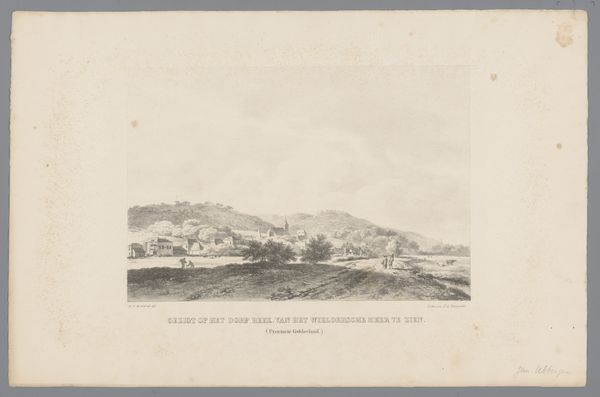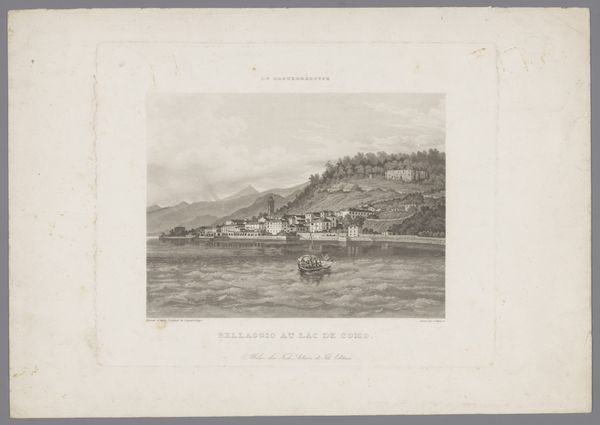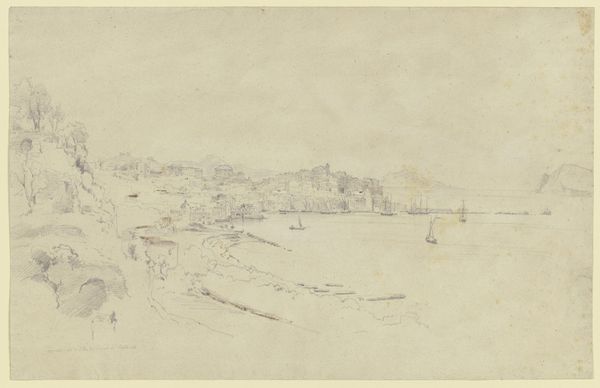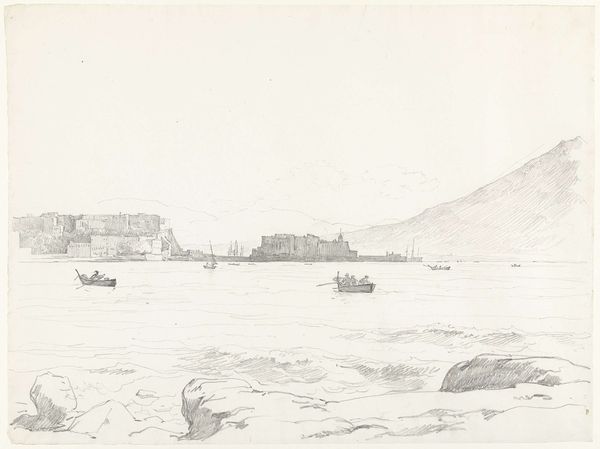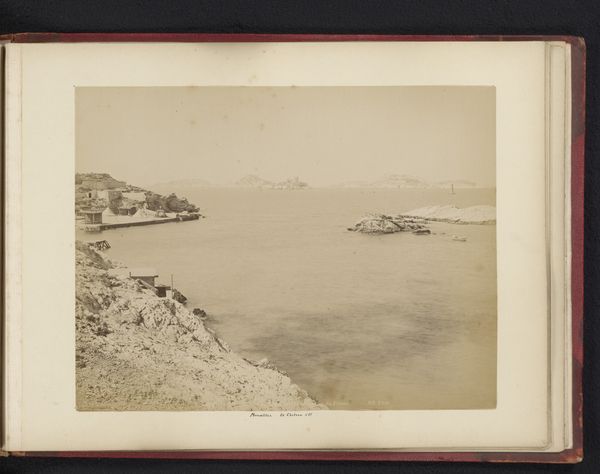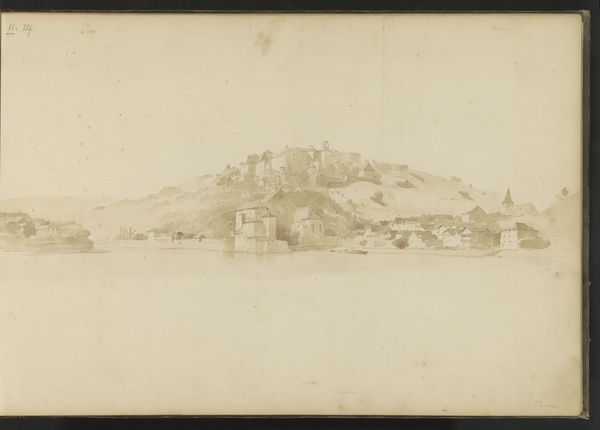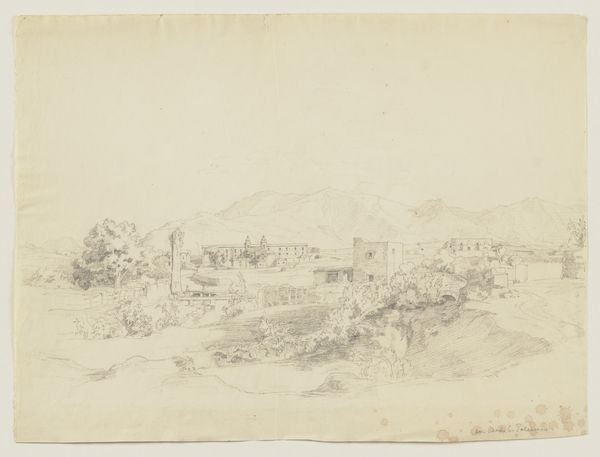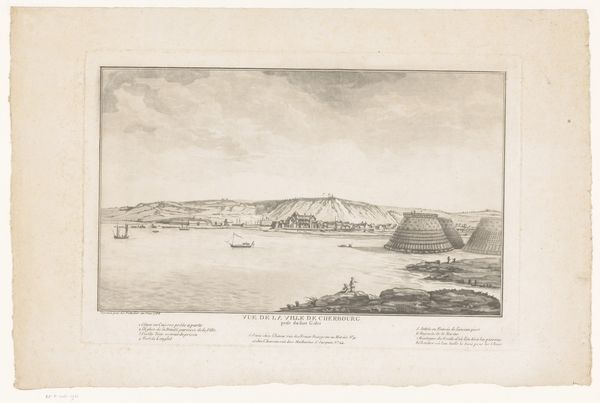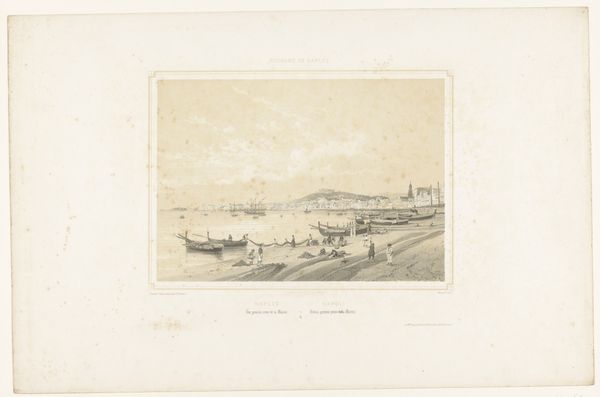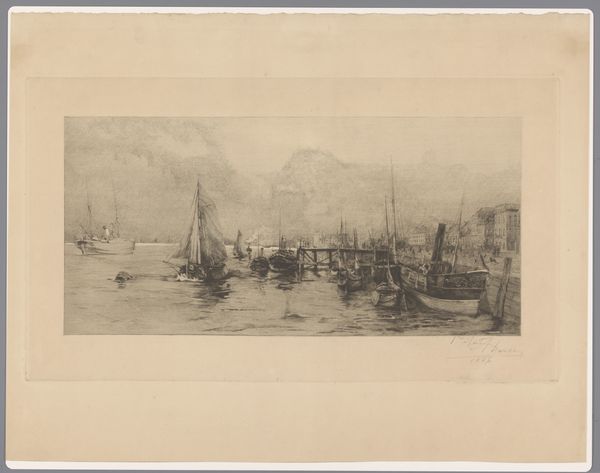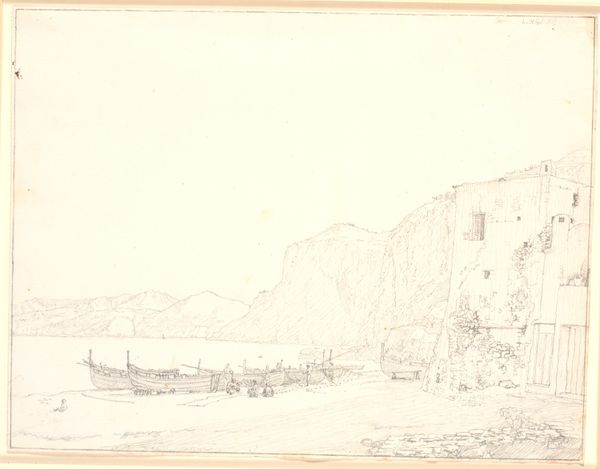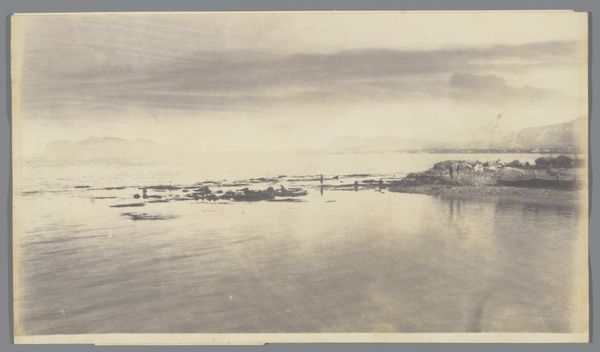
drawing, pencil
#
drawing
#
16_19th-century
#
landscape
#
german
#
pencil
#
cityscape
#
watercolor
#
realism
Copyright: Public Domain
Curator: This is Adolf Hoeffler's "Santiago de Cuba vom Hafen aus," created in 1853. It's a delicate pencil drawing currently held in the Städel Museum. Editor: The image immediately strikes me with its dreamlike quality. The subtle gradations of tone lend it an ethereal feel, as though it is a memory surfacing from the depths of time. Curator: Indeed. Consider how Hoeffler uses a limited tonal range, a kind of restrained palette in monochrome, to depict the textures of the architecture against the mountainous backdrop and bustling harbor. Editor: The tall masts of the ships dominate the composition, puncturing the skyline. As icons, ships represent not only commerce and travel but also the meeting of cultures, sometimes peaceful, other times less so. What meaning did the ships have at this historical moment for Cuba? Curator: Cuba in the mid-19th century was still under Spanish colonial rule, so these vessels likely represent trade, power, and perhaps even oppression depending on one's perspective. Note also how the city seems almost integrated into the landscape. Editor: Yes, there’s an almost symbiotic relationship implied. The buildings nestle on the hillside beneath those stoic mountains like extensions of the earth itself. But also note, that while rendered with careful realism, the scene feels almost like a stage set, the backdrop looming over the human drama unfolding in the foreground. Curator: It’s interesting that you read a performative quality here. I agree, however, it avoids grandstanding. The visual restraint seems intent on capturing the atmosphere, not judging its social or political undercurrents. It renders the city with great care without overtly commenting. Editor: And the image evokes this curious blend of tranquility and latent tension, like the calm before a storm, which I suppose metaphorically it was. These symbols and compositions resonate, inviting the viewer to meditate on transience and historical change. It is a subtle piece. Curator: A potent observation. Indeed, Hoeffler gives us much to think about through subtle articulation. Editor: Yes, and thinking about this piece alongside the political and cultural context really enhances one's appreciation of it.
Comments
No comments
Be the first to comment and join the conversation on the ultimate creative platform.

